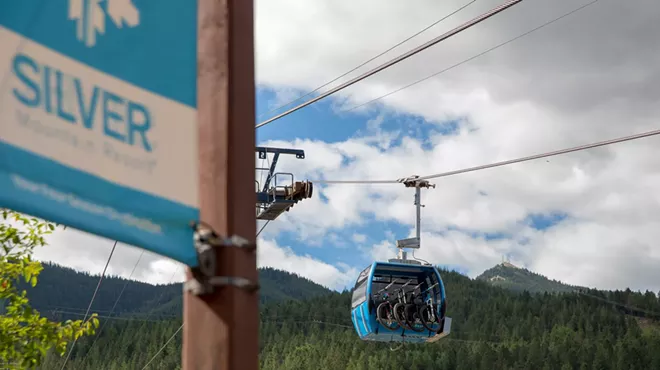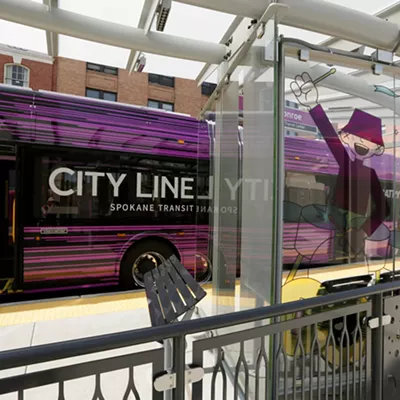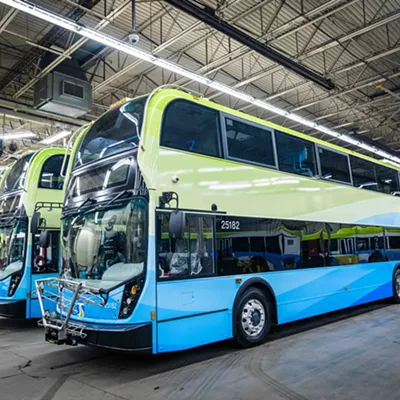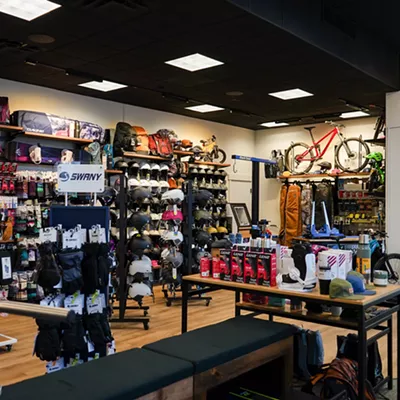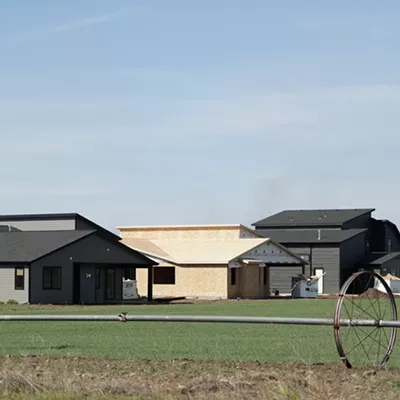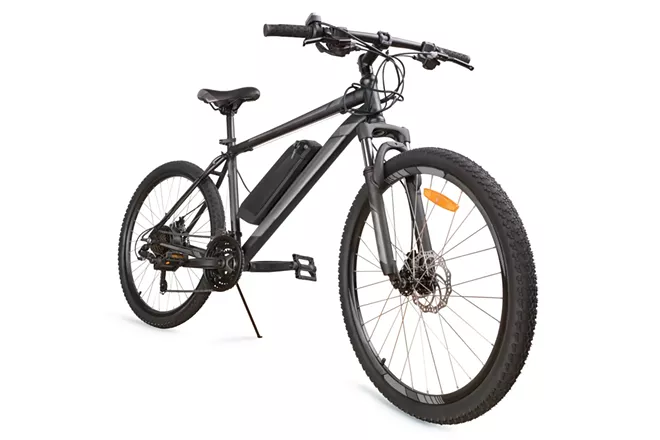
When Lauren Pangborn became a member of Spokane's Bicycle Advisory Board, a volunteer group that advises the city on all things biking, she mentioned at a meeting that she finally replaced her car with an electric bicycle. That made fellow member Michelle Sidles think: "Could I do that?"
"More than eliminating a car, I just wanted to drive so much less," says Sidles, who's had a car since she was 16.
Then Sidles' husband got an e-bike and took her for a ride. The experience was "pure joy," and Sidles was sold.
"I think I ordered [my e-bike] in, like, one minute, which is definitely not my nature," she says.
Electric bicycles, or e-bikes, are gaining traction in recreational and commuter circles alike. They provide the same freedom from parking and gas stations as a pedal bike, but their motors help eliminate sweaty pits and burning quads of an analog commute.
Sidles began riding her e-bike so often she realized she no longer needed her old Subaru. So she sold it to a man who was downsizing from a large truck.
When it comes to choices like driving or riding or walking, she says, "I think we can all be a little more thoughtful. Just stopping and thinking, 'Is this necessary?'"
If you're also looking to dodge gas prices, soften your environmental footprint or add some fun to your lifestyle, here's what you need to know when considering an electric bike.
PREP
The best thing about prepping for an e-bike is: There is no preparation required! You don't need a special license to ride an electric bike, just like you don't need one to ride a pedal bike. E-bikes are typically accepted anywhere a traditional bike is allowed, including in car lanes if no other bike provisions are available. Since e-bikes go at least 5 mph faster than traditional bicycles, they may be safer to ride in car lanes (and less annoying to the car behind you). Still, make sure to scope out routes for bike lanes, separated paths or other bike-friendly infrastructure. Try to avoid wide one-way streets and main arterials where cars are tempted to speed. For example, Sidles won't ride down Monroe Street, where cars are practically flying.
TYPES
E-bikes are divided into three classes: Class 1, Class 2 and Class 3, for easy reference. Classes 1 and 2 have a top speed of 20 mph (the typical biker is pedaling 12-15 mph). Class 1 is pedal-assisted, which means you have to be pedaling for the motor to kick in. Class 2 has a throttle, much like a motorcycle, and you can pull back the handle and go without any leg work. Class 3 has a top speed of 28 mph, which is about as fast as most cars are going downtown. Class 3 is also pedal-assist, because if you want to go that fast and be lazy, just get a scooter.
Some models in each category are also cargo bikes. Cargo bikes have an extended platform over the back wheel that can carry passengers, child seats, groceries or other precious parcels. These bikes make it much more possible to run errands that require goods other than yourself.
WHERE TO BUY
There are two ways to get your hands (and butt) on an e-bike. Direct-to-consumer platforms like Rad Power Bikes ship bikes to buyers without a middleman. But this leaves some assembly up to the customer. So if you consistently tap out from assembling Ikea furniture, look for a local store that sells e-bikes assembled by professional mechanics. The Bike Hub, Spoke N Sport, North Division Bicycle and Wheel Sport Bicycles, among others, all sell ready-to-go e-bikes in their brick and mortar shops.
COST
An e-bike can cost anywhere from $1,500 to $15,000. The most expensive bikes are usually electric mountain bikes, which have a whole host of accessories that are irrelevant to a city commuter. Models that interest most riders run from roughly $1,700 to $5,000. The sticker price can be staggering to a hesitant convert, but it all hinges on perspective. If this bike can actually replace your small sedan, or meaningfully replace car trips, it could fatten your wallet over the long term.
WHAT'S BEST FOR YOU?
Most commuters and recreational riders buy Class 1 e-bikes from brands like Momentum (made by Giant) and Trek. They're easily customizable and provide all the power and speed that most bikers need. Noah Smith at Bike Hub says that responsible riders can get up to 100 miles on an overnight charge, though a reliance on turbo could bring it down to 30 to 50 miles. Only commuters covering lots of distance on good infrastructure may want to consider the extra speed of a Class 3 bike.
Pangborn, Sidles' inspiration to become an e-bike convert, loves that her Class 2 e-bike has a throttle, which makes it easier to get up to speed through an intersection as fast as the surrounding car traffic.
Ultimately, it may not be realistic to ditch your car entirely. But e-bikes could be the first step toward decreasing consumption or adding daily exercise to your life. These steps count.
"As you start making these changes," Sidles says, "they start to snowball!" ♦
[CORRECTION: The print version of this story incorrectly listed Rad Power bikes as Class 1]







